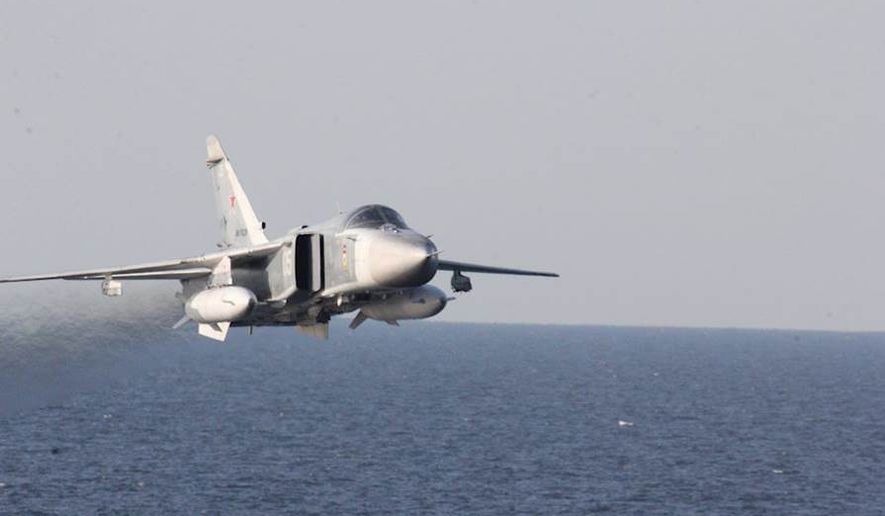Senior Pentagon leaders and their Russian counterparts on Wednesday fine tuned plans to ensure warplanes from both countries operating in the skies above Syria stay out of each other’s way.
Acting Assistant Secretary for International Security Affairs Elissa Slotkin and Joint Staff Director for Strategic Plans and Policy Lt. Gen. Kenneth McKenzie held a video teleconference from the Pentagon with officials from the Russian Ministry of Defense to discuss the deconfliction pact.
“The two sides committed to adhering to the [deal] on flight safety as long as each side is operating in Syria,” Pentagon spokesman Peter Cook said in a statement. “The conversation was constructive and the two sides agreed to continue safety discussions in this format in the future,” he added.
Washington and Moscow initially formed the Syrian airspace pact last October, after several near misses between Russian fighters and U.S. aircraft, who were conducting airstrikes against Islamic State, also know by the acronyms ISIS and ISIL, targets in the country.
At the time, the Kremlin ordered Russian airpower into the country to support embattled Syrian President Bashar Assad’s forces, who were battling anti-government rebels fighting to oust the longtime leader.
It was the first formal communication between the Pentagon and Russia since both countries announced plans to ramp up its forces in eastern Europe.
SEE ALSO: U.S. airstrike on Afghan hospital the culmination of a tragedy of errors
Earlier this month, Moscow announced plans to create three new military divisions totaling 30,000 troops to protect its southern and western borders.
The Russian troop announcement came days after the Pentagon announced that NATO is weighing the establishment of a rotational ground force in the Baltic states and possibly Poland as a deterrent to Russian aggression there.
The proposed force would consist of four battalions, or 4,000 troops, and would be in addition to the 4,200-man U.S. Army armored brigade Pentagon officials plan to deploy separately to the region next February.
Talk of Russian and NATO troop increases in eastern Europe, specifically the Baltics, was preceded a series of antagonistic incidents between the two countries’ forces.
Last month, Russian fighters and attack helicopters carried out simulated attacks on the USS Donald Cook, a Navy destroyer operating in the Baltic Sea.
For two days, Russian pilots “made numerous, close-range and low-altitude passes” above the Donald Cook while it was conducting routine maritime drills, mimicking maneuvers used to strafe enemy targets.
SEE ALSO: U.S., Afghan special forces free son of former Pakistani prime minister
A Russian fighter jet also reportedly conducted a “barrel roll” over a U.S. Air Force RC-135 reconnaissance plane flying over the Baltic Sea, flying within 100 feet of the American aircraft, according to recent reports.
The Pentagon and NATO chastised the Kremlin for its bellicose behavior, calling the maneuvers “unsafe and unprofessional.”
• Carlo Muñoz can be reached at cmunoz@washingtontimes.com.




Please read our comment policy before commenting.